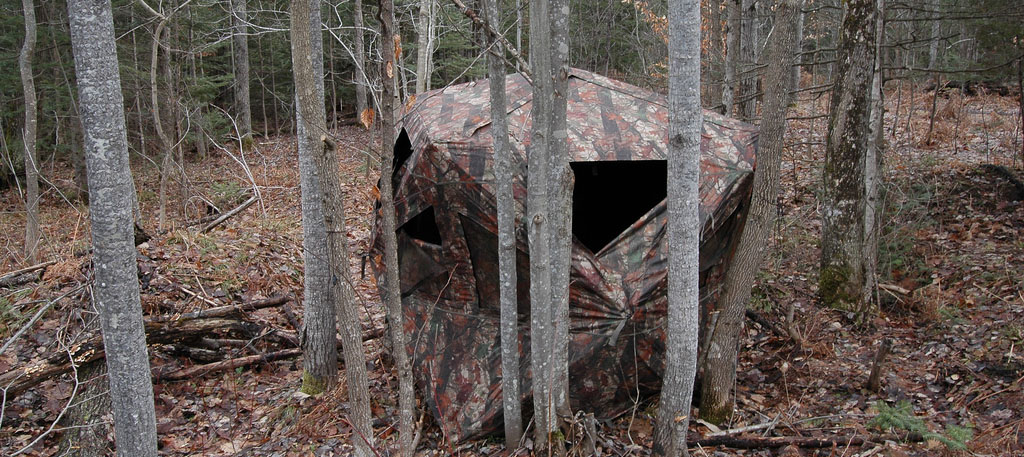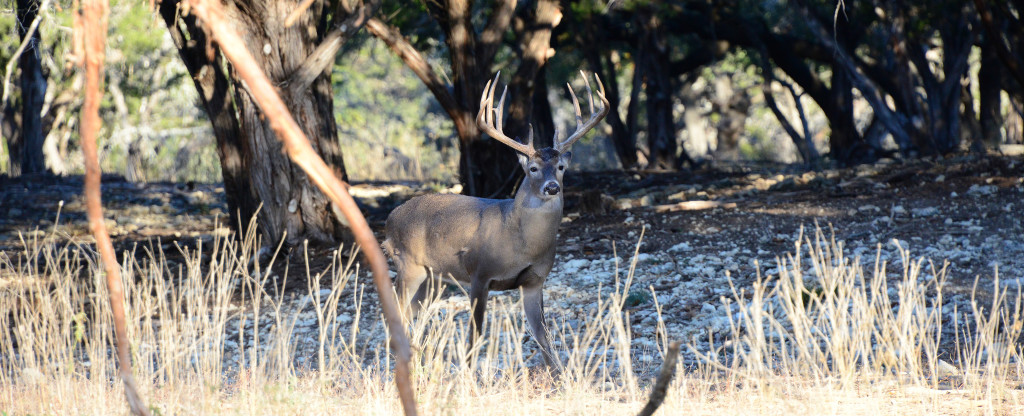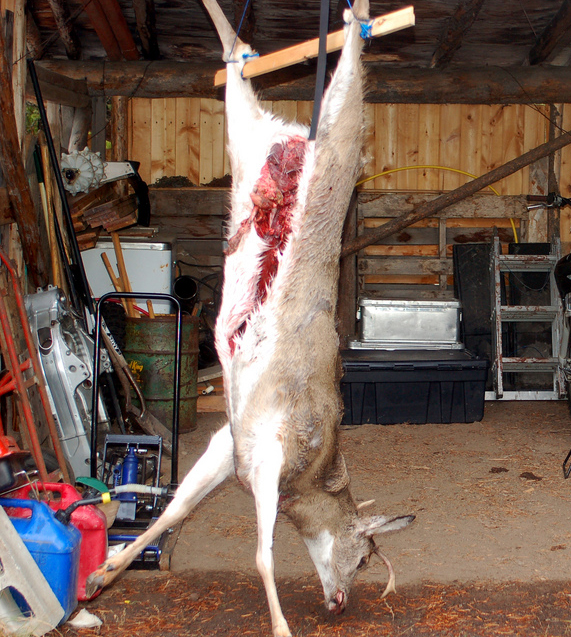The smallest member of the North American deer family and also the most numerous and wide-ranging, whitetail deer (Odocoileus virginianus) remain by far the most popular game species in the United States—with more that 11 million hunters pursuing these majestic creatures each year. Despite these huge numbers, there is actually a lot of whitetail deer information that many hunters don’t know. To help solve this problem, this article will present you everything you need to know about the species. We'll cover where they live, what they eat and how they behave. As well, you’ll also find some fun whitetail deer facts so you can impress your hunting buddies this next season.
What Do Whitetail Deer Look Like?
The easiest way to spot a whitetail also happens to be the reason they got their name...their fluffy white tails. When a whitetail is alarmed, it raises its tail to show the white underside. This is a way to alert other nearby deer to the potential danger. The other side of the tail is generally the same color as the rest of its body. This can range from a reddish-brown color during the summer to a duller gray color during winter. In addition to their tails, they also have smaller white patches on their legs and face.
Even without the trademark white tail, it’s usually easy to tell a whitetail apart from a mule or blacktail deer. Firstly, whitetail and mule deer antlers look quite a bit different. Whitetail antlers curve forwards while mule deer antlers tend to grow more straight up. As well, mule deer are generally a darker, duller color than whitetails, in addition to being much larger on average.
Facts About Whitetail Deer
Range
Whitetails are an incredibly adaptable, successful species, ranging throughout much of Canada and the United States down through Central America and into the northern parts of South America. There is some debate as to the actual number of sub-species of whitetails, but most scientists are in agreement that there are around 30 different sub-species in North and Central America and around 10 in South America.

Like many other animals, the whitetail deer sub-species tend to become larger the further away from the equator they are, with the smallest whitetails being those at or near the equator. In North America, the largest sub-species are the northern or woodland whitetail and the Dakota whitetail. Although the average big buck may only weigh up to 275 pounds or so, some whitetails in these more northern ranges have been known to exceed 400-500 pounds. The most widespread species in North America is the Virginia whitetail, while both the Florida Key whitetail and Colombian whitetail (found in the Pacific Northwest) are both considered endangered species.
Habitat
In terms of habitat, whitetails are again very adaptable. Due to changes in the environment caused by farming, humans have unwittingly created whole new habitats where whitetails thrive—offering them plenty of cover and a variety of readily available, nutritious food sources.
Their preferred habitat is in open forests, as this offers them the cover they need when bedding down for the day. However, they tend to live near the edges of the forest, close to brushy areas, farmland and fields. They travel to these areas to feed from dusk until dawn. With farming, humans slowly created a habitat almost perfect for whitetails to thrive in. Still, they can also be found in the swamps of Florida and Central America, as well as the thornbrush deserts of Texas, Arizona and Mexico.
Reproduction and Life Cycle
Whitetail deer usually mate between October and December, in a period known as the rut. Whitetail deer behavior is extremely aggressive at this time. The sight of two bucks locking antlers, fighting to see which one gets to mate with the does is truly something to see. The antlers really only serve this one purpose, as a way to determine who is the strongest and thus gets to mate. In fact, changes in light and the drop in testosterone result in the bucks soon shedding their antlers. This happens as soon as the rut is over and all of the available does have been bred. Not to worry though, they’ll soon grow them back at an incredible rate a few months down the road.
After breeding, the female carries the unborn fawn for around 6.5 months before giving birth early in the spring. Most does will become pregnant for the first time in their second year. If plenty of nutritious food is available, some may be able to get pregnant at only seven months of age. Does typically have one fawn during their first pregnancy and then anywhere between one and three from there on.
The red-colored fawns are covered in white spots that help them blend in. Although the fawns can walk as soon as they are born, they spend the first month or so of their lives on their stomachs with their heads extended out flat on the ground to try and hide whenever their mother goes out to feed. The mother can’t stay out too long though, as the tiny fawns are fully dependent on her milk until they are two months old. At this age, they begin to eat more vegetation as their mother slowly weans them off milk over a two or three-week period.
Lifespan...
The typical whitetail deer should live to an average age of 10 or so, but in truth, the real average age is much closer to three or four years old due to hunting, cars, illness, etc. However, when kept in captivity, whitetails can often live to anywhere from 16 to over 25 years. Of course, there’s also a chance they could live over 20 years in the wild, but this is extremely rare nowadays.
History of Whitetail Deer Hunting and Conservation
Whitetail deer were an important resource for Native Americans, as well as the first settlers that arrived in North America. However, as more and more settlers arrived and cities grew larger, the fur trade also began a serious boom. This culminated in Native Americans killing an estimated 5 million whitetails a year in order to satisfy both the American and European demand for hides and fur.
Luckily, the demand eventually died down at the beginning of the 1800s. This decline, combined with the deer moving into the newly created habitats caused by the increase in farming, saw the population make a drastic comeback that unfortunately wouldn’t even last 100 years.
In the late 1800s, commercial whitetail deer hunting came on with a vengeance, with so many animals being killed in such a short period of time that the whitetail population across the entire United States dropped to an all-time low of only 500,000 deer. Many areas of the country that once had thriving herds saw them completely disappear from the landscape, with not a single buck or doe to be found any longer.
Population Grows Again...
Sensing this growing environmental catastrophe, the U.S. government passed the Lacy Act in 1900, which prohibited interstate trafficking of wild game, including venison. This was the first federal wildlife act passed, which was followed in 1908 by 41 states passing their own wildlife acts. These acts soon began to help the population grow again, but the deer then got a further boost during the Great Depression.
As more and more desperate people began to leave their farms for the city, the available whitetail habitat increased and deer began to spread further and further across the country. The population continued to grow at a steady pace, before taking off like a rocket beginning in the 1970s. Before this time, hunters typically never shot does. However, a scientific study showed that populations could be better managed if both does and bucks were harvested instead of only taking bucks.
From this point on, whitetail have continued their trend of spreading further and further. In some places they are now outcompeting the mule deer that used to dominate the area. From a low of 500,000 a little over 100 years ago, the population now stands somewhere around 20-25 million.
Some More Whitetail Deer Facts
Whether you’re looking for whitetail deer facts for kids or just something to impress your friends with, here are some strange and interesting tidbits you may not know.
- A whitetail's strong legs allow it to jump as much as 10 feet high or 30 feet long when running.
- The legs also allow them to run at speeds of up to 40 miles per hour and even to swim at speeds up to 13 miles per hour.
- With its eyes positioned on the sides of its head, a whitetail has 310-degree range of sight. Unfortunately this position makes it difficult for the deer to properly focus its vision.
- Life other ruminants, deer have a four-chambered stomach that helps them to digest grasses, twigs, bushes and other tough fibrous plants.
- Whitetail deer food sometimes also consists of berries, mushrooms, lichens, fruits, acorns, shoots and more.
- When the deer eats, it barely chews the food before swallowing. Instead, it waits until it is back lying in its bedding area before regurgitating the food and chewing it more thoroughly.
- Whitetail antlers are some of the fastest growing types of tissue on the planet. They grow as fast as 1/2 inch per day.
- Deer can rotate their ears in all directions without having to move their heads.
Whitetail deer truly are an amazing animal. The chance to try to bag a big one is something many hunters spend nights lying awake thinking about. Still, maybe after reading these whitetail deer facts, you’ll have a whole new appreciation for these special creatures.





